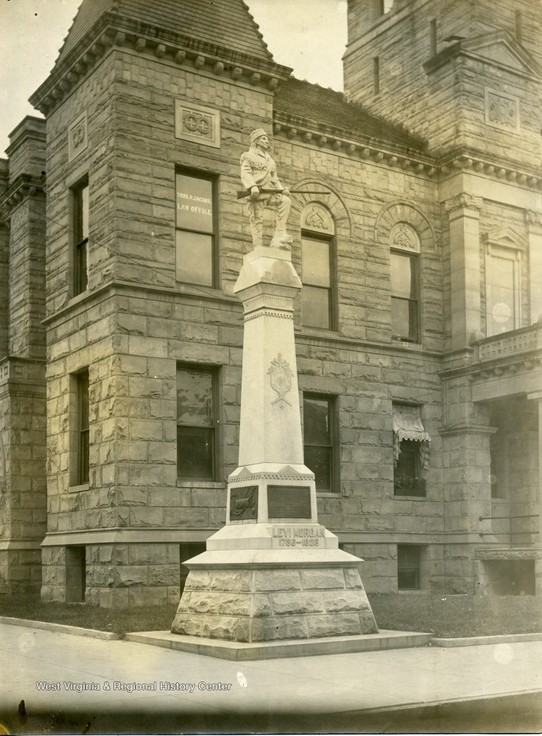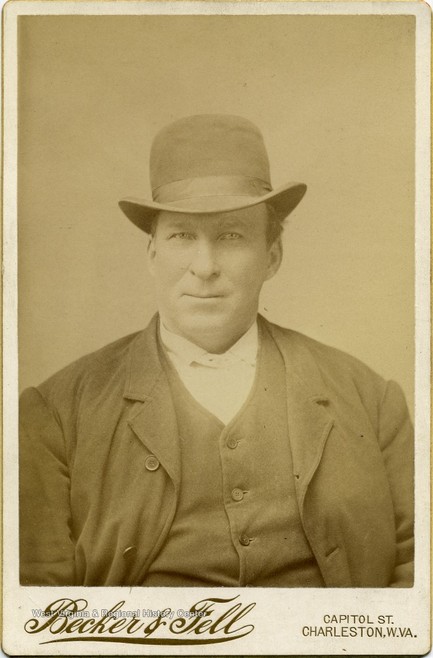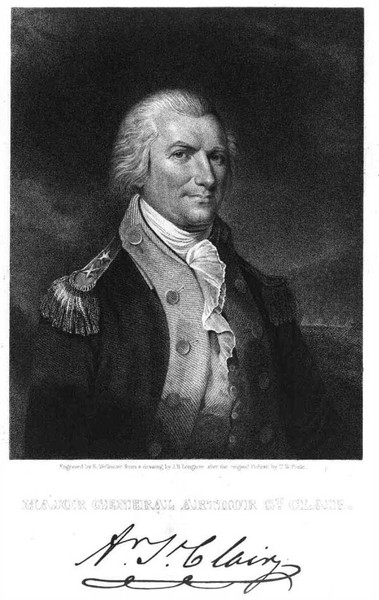Levi Morgan Monument
Introduction
Text-to-speech Audio
Images
Levi Morgan Monument

Aaron Morgan

General Arthur St. Clair

Backstory and Context
Text-to-speech Audio
Born on June 26, 1766, Levi Morgan belonged to the prominent Morgan family of western Virginia. Levi's grandfather Morgan Morgan emigrated to the American colonies from Wales and is thought to be the first white settler to live in what is now West Virginia. Levi's father Colonel Zackquill Morgan established Morgan's Town (now Morgantown) in western Virginia and was an acquaintance of George Washington. From a young age, Levi learned the skills necessary to live in the Virginia backcountry. He likewise grew accustomed to dealing with Native Americans, learning to speak the Algonquian language of the Lenape (or Delaware) tribe.
As Levi Morgan grew up, he entered a frontier world fraught with conflict between white settlers pushing ever westward and disparate Native tribes determined to keep white men at bay. Morgan developed a reputation as an Indian fighter, and a number of tales speak to his adventures. In one such story, Morgan encountered several Indians who stole his neighbor's horse. Morgan ambushed them, killing one quickly. Unable to reload his gun, however, Morgan was forced to flee. One Native American took up the pursuit. Losing the footrace, Morgan hoped to distract the Indian by dropping his gun, then shot pouch, then coat. But his pursuer stayed the course and kept gaining on the settler. Reaching a hilltop, Morgan cried out, "Come on, come on; here's one, make haste...Shoot quick, or he will be out of reach." Although no one was nearby to hear Morgan's cries, the ruse worked; the Indian halted his pursuit and fled, thinking Morgan had friends nearby. Although Morgan lost his gun during the chase, he apparently met the same Indian years later and won the gun back in a fair race.[1]
Levi Morgan took part in the disastrous 1791 United States expedition against Miami Chief Little Turtle and his Western Indian Confederacy in the Ohio country during the Northwest Indian War. The U.S. sought to force Little Turtle out of the Ohio region, and 1,400 men (including Morgan) were sent west under General Arthur St. Clair to defeat the Native Americans. Instead, on the banks of the Wabash river, the U.S. suffered the worst military defeat ever inflicted by Natives. Over 600 Americans were killed and nearly 300 wounded. Levi Morgan survived the battle. Afterwards, Morgan continued to serve as an officer with a small militia company based along Fishing Creek (near modern New Martinsville, WV).
In 1826, Levi Morgan was captured by Native Americans in Kentucky, but managed to escape. Hiding in a hollow tree for several days, he finally froze to death.
Levi Morgan's descendant Aaron Morgan played a central role in the establishment of the monument to his frontiersman ancestor. Aaron Morgan served in the West Virginia legislature, and in 1901, helped secure a $3,500 appropriation for a monument to Levi Morgan in New Martinsville, Wetzel County. A popular misconception is that the monument was meant for Morgantown (given the Morgan family's ties to that location), but Wetzel County was the original choice because of Aaron Morgan. The West Virginia Monument Company crafted a monument depicting Levi Morgan standing atop a large stone pillar. Since no portrait of Levi himself existed, Aaron Morgan was used to sculpt Levi's likeness. The monument was dedicated on July 4, 1902, following a parade through downtown New Martinsville.
Sources
1. John C. McEldowney, Jr. History of Wetzel County, West Virginia. 1901. Digitized. https://archive.org/stream/historyofwetzelc00mcel/historyofwetzelc00mcel_djvu.txt
2. "People of Note in Marion County: Levi Morgan." March 1, 2011. Marion County Historical Society & Museum. Web. Accessed July 27, 2020. http://www.marionhistorical.org/pages/people.php#m
3. Chuck Clegg. "Mr. Morgan's Fourth of July." July 3, 2013. Wetzel Chronicle. Web. Accessed July 26, 2020. http://www.wetzelchronicle.com/page/content.detail/id/512891/Mr--Morg
4. "St. Clair's Defeat." Ohio History Connection. Web. Accessed July 27, 2020. http://ohiohistorycentral.org/w/St._Clair%27s_Defeat
5. Barb Minor. "Levi Morgan Statue in New Martinsville Is Cleaned and Unveiled." July 10, 2002. Wetzel Chronicle. Web. Accessed July 27, 2020. https://www.wvgenweb.org/harrison/wetzel1.html
6. Alexander Scott Withers. Chronicles of Border Warfare. 7th edition. Cincinnati, OH: Stewart & Kidd Company, 1920. Digitized. https://books.google.com/books/about/Chronicles_of_Border_Warfare.html?id=aLEUAAAAYAAJ
https://wvhistoryonview.org/catalog/015313
West Virginia & Regional History Center, https://wvhistoryonview.org/image/037771.jpg
Library of Congress, https://www.loc.gov/collections/continental-congress-and-constitutional-convention-from-1774-to-1789/articles-and-essays/to-form-a-more-perfect-union/arthur-st-clair/
